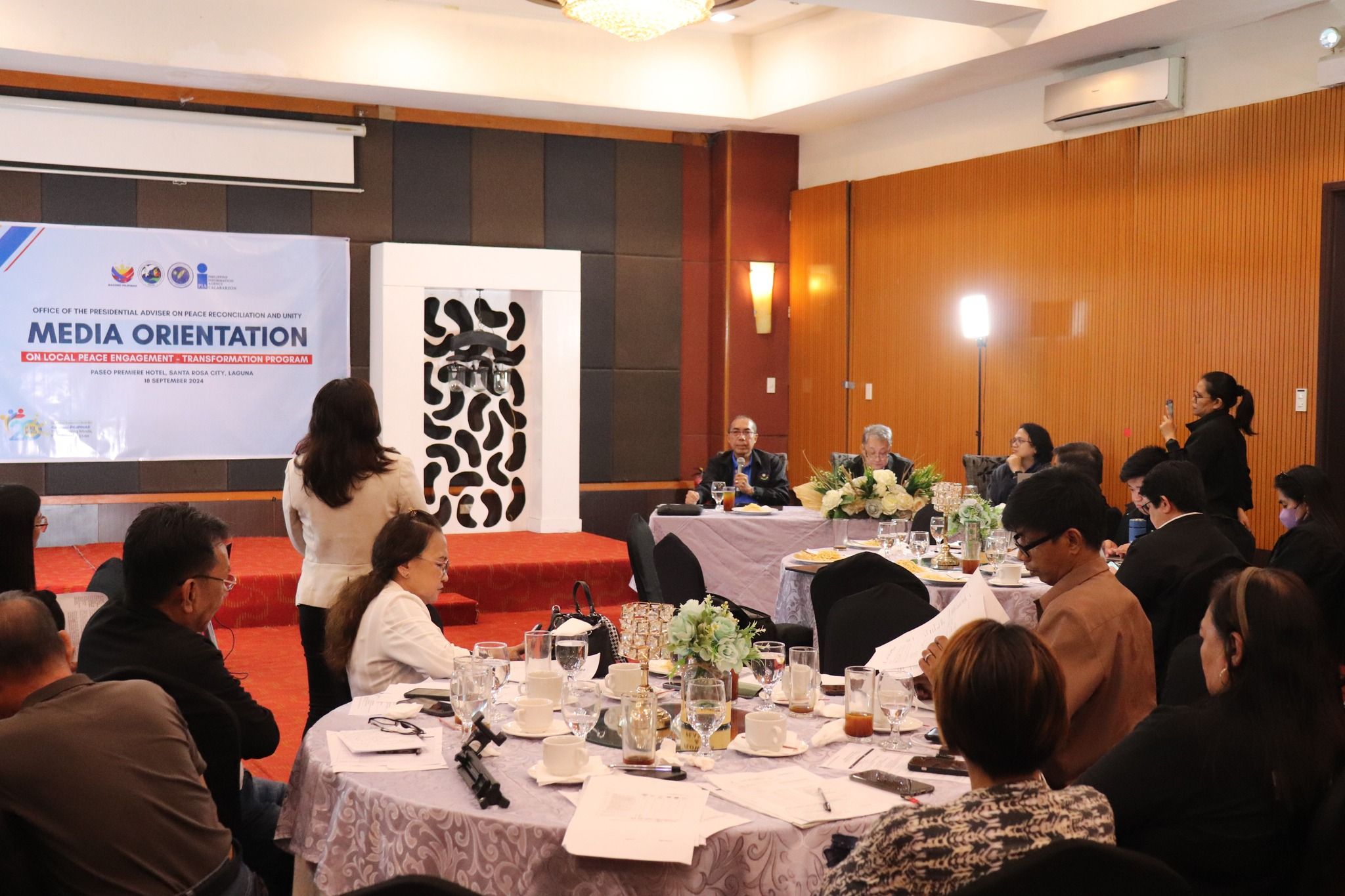In today’s world, media in all forms is a powerful tool. It has been proven to sway government policy and public opinion.
The question is, what role should we in the media play to bring inclusive peace and economic development in Laguna province?
That was one question government officials sought to answer during a recent orientation conducted by the Office of the Presidential Adviser on Peace, Reconciliation, and Unity (OPAPRU) in Santa Rosa City, Laguna last September 18.
The media briefing, which was attended by local media in Laguna province and the Calabarzon region, was part of a nationwide campaign (this orientation was the 7th in the Philippines, according to officials) that seeks the support of local media in promoting peace and stability in the region.
Easier said than done
There’s no doubt that “peace” is a joint aspiration of all Filipinos – but, as Assistant Secretary Elmer Jude Mesina, Deputy Director-General for Knowledge Management and Strategic Communications of the Philippine Information Agency (PIA), talking peace is a lot easier than doing something about it.
"It's more difficult to make peace than to make war,” Mesina quoted the late Palestinian leader Yasser Arafat in his message during the orientation.
This, according to him, is the main reason why the Marcos administration, despite retaining the decades-long hardline stance of the government against Communist rebellion, has left an open door for rebels to return to the fold of the government and participate in active (and inclusive) socio-economic development.
Media’s role
But inviting rebels to lay down their arms, again, is easier said than done. And this, according to officials during the orientation, is where local media can play a big role in countering misinformation (and disinformation).
With their wide reach and influence among locals, Maj. Gen. Rhoderick Parayno (Ret.), regional adviser for peace and security in Calabarzon, believes local media can raise awareness of the national government’s community-based poverty reduction efforts.
Not only that, local media can encourage rebels still holding out in various parts of Laguna province (take note, however, that at least seven towns in Laguna province have been declared as areas of "Stable Internal Peace and Security", or areas cleared of rebel groups) to avail of the Enhanced Comprehensive Local Integration Program (E-CLIP) of the national government.
“Communities do not really know [what the government does for them]. Barangays have their own budget allocation, but the barangay captain does not know how to tap it,” Parayno explained.
In an effort to bridge the gap between the government and the community through development communication, Parayno expressed his confidence that the government is on the right direction by working with the media, who have witnessed the government’s efforts towards achieving sustainable peace and development.
“I think we are in the right direction, and it’s just a matter of letting the people know that this is the status of the government, and this is what we are doing [for them].”
Focus on youth
Speaking of misinformation and disinformation, one of the notable issues discussed during the orientation is the vulnerability of today’s youth, particularly in the age of social media.
This, according to Cristina Arzadon, PIA CALABARZON Regional Head, is where the media becomes an important partner in the government’s peace advocacy, particularly in countering misinformation, disinformation and fake news.
“The PCO, PIA and OPAPRU recognize the media as instruments in promoting peace by reporting on issues that inspire, educate and uplift,” she said.
“More importantly, beyond mere information dissemination, the PCO and PIA are dedicated to countering misinformation, an advocacy that our media partners likewise share,” Arzadon added.
Open mind
But most importantly, as Mesina pointed out during his closing remarks at the orientation, is that both sides should keep an open mind in order to reach a compromise where they can work together – an important aspect of the democratic process.
It went unsaid during the orientation, but one important takeaway is that local media could, instead of fanning the flames of mistrust and hate, encourage government officials and rebels alike to set aside personal and ideological prejudices and work out on a consensus to achieve long-lasting peace and development in the province.
Or, as Mesina himself stressed in his message, “Hindi po tayo pwedeng mag-usap [ng kapayapaan] kung naka-kahon ang ating isipan.”
PHOTO CAPTION:
Members of the Office of the Presidential Adviser on Peace, Reconciliation, and Unity (OPAPRU) answer questions from local media during the recent media orientation conducted by the OPAPRU, in cooperation with the Philippine Information Agency, in Santa Rosa City, Laguna last September 18. (Photo courtesy of the Philippine Information Agency)
#WeTakeAStand #OpinYon #OPAPRU #PIACALABARZON #PCO #MediaasToolsforPeace
